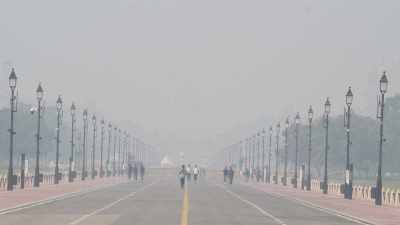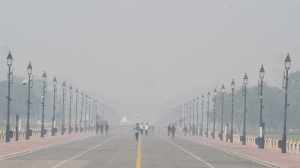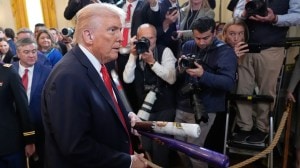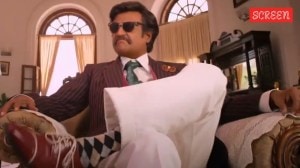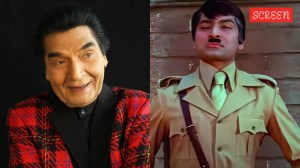Building bridges out of barriers
NEW DELHI, FEB 20Iftikhaab Hussain, a Delhi University student was with his family inhometown Kargil last summer, dodging shells and bulle...

NEW DELHI, FEB 20
Iftikhaab Hussain, a Delhi University student was with his family inhometown Kargil last summer, dodging shells and bullets from across theborder.
"What kind of people are they who are out to kill us," he used to wonder.This January he got an opportunity to meet "them", when he went beyond thebarbed fences that separate India and Pakistan — and felt as if he hadknown `them’ all along.
"I used to hate them," he admits, "but after going there and travellingaround I was quite perplexed as to whom to blame."
Hussain’s friends echo his thoughts.
"I don’t think any of us ever enjoyed our Indian identity as much," saysAnand Taneja, one of the 12 students of Ramjas College who went to Pakistanrecently along with a teacher, and returned with fond memories.
And as they recount the week in the "enemy country" their faces shine, eyestwinkle and hope springs. For once, the border seems to melt away.
"We didn’t find the Paksitan we were looking for, the Pakistan that existsin the minds of so many of us," says Madhuresh Kumar. "People were so warmunlike the official position taken by Pakistan vis-a-vis India."
It was like any other historical trip of Ramjas History Society. Except,this time it was destination Pakistan.
They had no programme, no fixed itinerary — just a shoestring budget of Rs2,000 and the permission to visit Lahore, Islamabad, Peshawar and Taxila.
The cold wintry night at Lahore, as Samjhauta Express chugged into thestation, turned warm with the reception by their only contact, a journalist.
"What struck us was the similarity," says Mukul Mangalik, the teacherleading the group.
"Lahore was so much like Delhi. Even the buses were as crowded as DTC,"says Anand Taneja. "They too have a shahdara across the river," saysMadhuresh, of a locality by the same name in the capital of PakistaniPunjab.
"People were ordinary people like in India, grappling with problems andtrying to find solutions," says Mangalik adding "once we were inside we justwondered: `what happened to the border?"
It just didn’t begin like a fairy tale though.
When the history department applied for visas to the Pakistan HighCommission in Delhi in September 1999 and were waiting for a reply, theOctober 12 coup happened.
"We nearly forgot about the trip. But surprisingly we got the permissionfrom that side," says Mangalik.
And the day they got the college principal’s go ahead, the Indian Airlinesflight from Kathmandu was hijacked.
The number that had initially shot up to 40 before the coup, dwindled to12, after the hijack news.
There was even some sort of an hostile reaction to the idea to go toPakistan, after the hijacking incident.
"You are walking into the jaws of death," some said.
Finally they were seen off by friends and relatives on the night of January5 with some trepidation.
"Accha zindagi rahi to phir milenge," were the kind of jokes bandiedaround, though not so jokingly.
"The other side of the border seemed like a forbidden fruit that was notsupposed to be partaken. We refused to believe that people across were justthe way it was made out to be," explains Mangalik on why the trip wasimportant.
They were taken around Lahore by Irfan Usmani, lecturer at the GovernmentCollege, whom they had never met before.
The group saw the scheduled places and found for themselves a country notdifferent from their own.
They had decided not to discuss politics, but emboldened by the goodresponse didn’t mind even doing that.
"They didn’t ever mention Kashmir. We were ready for even a hostilereaction that we were Indians, but that never happened."
The only place they felt slightly uncomfortable was in Peshawar where bigbuilt Pashto speaking Pathans roamed the streets.
The owner of the hotel they were in, asked them politely not to advertisethey were from India. "There are lots of uneducated, foolish people here,"he had cautioned.
But Mangalik says it is the same in both the countries.
"The important thing is to realise that both sides have people with strongviews about the other. But this should not hinder the process offriendship", he says.
"On the whole we discovered that common people are not in the leastobsessed about India in a devilish sort of a way" notes Mangalik.
However there were moments when they got anxious.
"Congratulations for the release of Maulana Masood Azhar," read a poster ona wall in Lahore. They could make out the presence of theHarkat-ul-Mujahideen and Lashkar-e-Toiba, asking for donations for `AzadKashmir’.
Some even brandished guns. "That gets slightly scary," the students admit.But there was another side to this too.
"Someone just beside the poster, knowing we were from india invited us fortea", they recall.
Siddharth Mishra, a student says: "The two countries are a reality now. Theearlier we accept this, the better it is for both."
"The boundary should not be a barrier," says Siddharth, "It should be abridge."
The group agrees with him.
"It is possible to live together. We have had a shared past," they say.
"At a time when walls are crumbling all over the world we are erectingfences," says Mangalik. "We must separate the nation and the state."
"Given a chance we’d love to go again," they say in unison. They evenremember some bus routes in Lahore city.
"Number 43 goes from Gulbarg to station," mumbles Mangalik. He remembers,for the memories are so very fresh.
For him and his students the boundary has melted.
The divide is political, only on paper.





- 01
- 02
- 03
- 04
- 05


